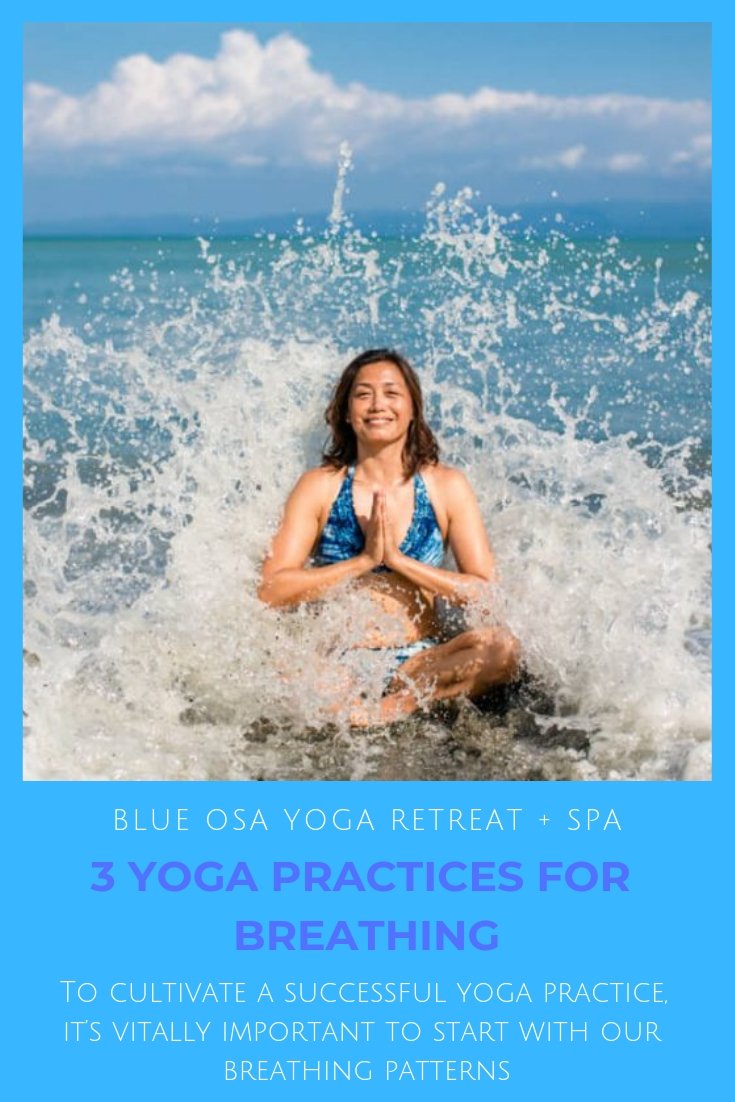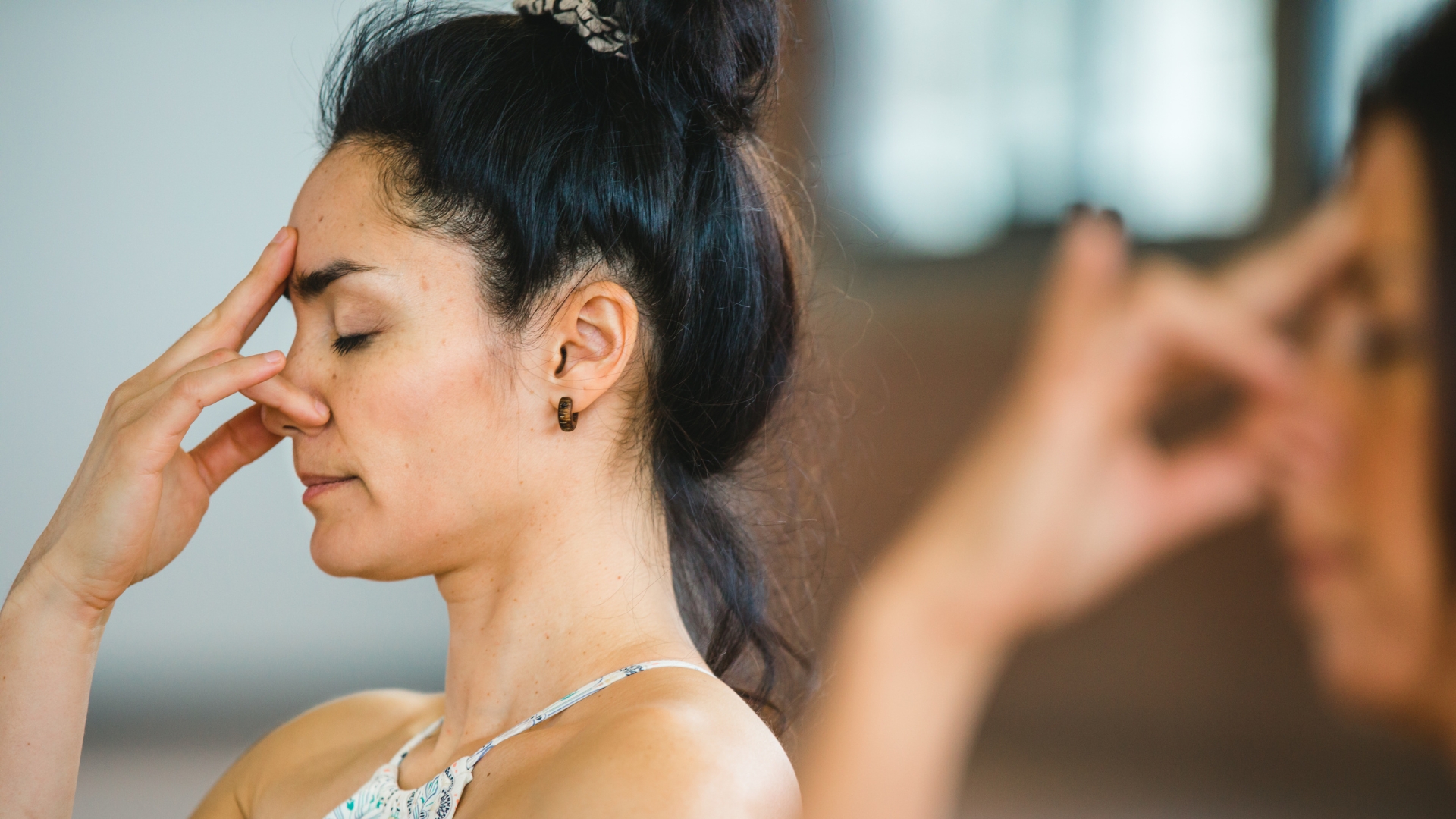Breathing is the essence of life. Inhaling fresh oxygen is vital for our organs, exhaling allows us to release toxins, and overall breathing patterns impact our well being. Humans breathe about 20,000 times a day automatically. Yet, most of us are unaware of our breath and its profound effects on our body and mind.
Although breathing is a fundamental life process, it’s not something that we’re formally taught to do. But in the yogic tradition, air is linked to prana – the vital life energy that sustains all living creatures. So breath work, or pranayama, is the foundation of every good yoga practice. In fact, the earliest yoga texts focused on pranayama and meditation practices with very few references to physical postures. So before you start to flow through yoga poses, focusing on your breathing pattern is the essential first step.
In our course, we’ll look at three highly effective breathing exercises that you can use as part of your morning routine. By bringing awareness to the breath and encouraging deeper breathing, these techniques help to energize the body and calm the mind.
The Importance of Breathing Correctly
Yoga begins with breathing. To cultivate a successful yoga practice, it’s vitally important to start with our breathing patterns. Some yogis argue that the breath is the gateway to consciousness. Breathing is an inherent process, so the moment we decide to breathe consciously is the moment we choose to rewire the very essence of who we are.
In an everyday context, breathing correctly is key to feeling good. Most of us don’t realize that when we breathe incorrectly, it impacts our nervous system. Taking rapid, shallow breaths increases feelings of anxiety and stress. But when we learn to breathe properly, we can train the nervous system to stabilize and become calm. By taking deep and full breaths, we can help ourselves to move out of that stressed state and into the peaceful state of “rest and digest”.
Yoga scriptures describe the mind and breath as mirrors of each other, meaning that one influences the other. So when our minds are active and busy, our breath is also busy and shallow. But if we can slow down our breathing, our minds will also start to become quiet. By gaining control of our breath, we can increase our feelings of stability, confidence, and peace.
[et_bloom_inline optin_id=”optin_16″]
Here are three breathing practices to try so that you can learn to master your breath. To get your day off to a great start, practice these in the morning for a boost of energy and clarity. Find a quiet space, where you can sit comfortably and won’t be interrupted, and enjoy all of the benefits of these techniques.
1:1 Breathing
1:1 Breathing, or Pure Breath, is a simple but powerful breathing exercise. Begin by slowing down your breathing and taking full, deep breaths. Place your hands at the bottom of your rib cage, on what’s known as your floating ribs. Start to imagine that they’re expanding and opening up on your inhalation and closing on your exhalation.
Next, put your hands on your belly and draw your awareness there. You should feel your belly move out with your inhalation and in as you exhale, in a pattern that’s known as reverse breathing. To deepen the practice, relax your hands as you inhale and invite the belly to come out into your hands. And as you exhale, take your hands against your belly and push in. This technique is also known as diaphragmatic breathing, as it makes full use of the diaphragm.
Balancing the inhalation and exhalation is the next step in 1:1 Breathing. As you breathe in and out, start to count silently. Aim to achieve the same number of counts on both your inhale and exhale to balance the breath. You can spend as much time on this technique as you like, but if you’re just starting out, try setting a timer for five minutes.
Alternate Nostril Breathing
Nadi Shodhana, or Alternate Nostril Breathing, is an ancient practice that’s used to calm the mind and body. This is a wonderful technique to use before settling into meditation or if you’re experiencing stress. What makes alternate nostril breathing so effective is that it brings awareness to the breath, engages the mind, and creates balance in the body and brain.
To get started, raise your right hand and curl your index and middle fingers into your palm. Keep your thumb, ring finger and pinkie finger uncurled to make the hand position known as Mrigi Mudra. Then, pressing your pinkie firmly against your left nostril, unblock your right nostril and breathe in and out through the right nostril. Next, block the right nostril and release the left side of your nose. Inhale and exhale through the left nostril and continue this pattern, alternately breathing through each nostril.
You can also use the 1:1 Breathing count by inhaling for four counts and exhaling for four counts through each nostril. While you get used to the technique, set a timer and aim to practice for a few minutes a day.
Sun Breath
Ancient yogis developed the technique of Sun Breath to awaken solar energy in the body. As the sun is responsible for life as we know it, yogis see it as a major pranic energetic force. According to yogic tradition, solar energy is responsible for courage, strength, and determination. So Sun Breath can be a powerful breathing tool to practice in the morning.
Sun Breath looks a lot like alternate nostril breathing, except you inhale through one nostril and exhale out of the other nostril. Bring your hand back into the position and block your left nostril. Inhale through the right nostril, then block both nostrils and hold your breath for anywhere from five to ten seconds. Then exhale through the left nostril, while blocking the right. As you start to cultivate a regular rhythm, imagine that golden light is flowing through your right nostril and saturating the left side of your brain in red, golden, and yellow light. Then, as you exhale through the left nostril, imagine that you’re releasing all tiredness and sluggishness. For Sun Breath, we recommend practicing for five minutes, as it takes this long to get the solar energy flowing.
Learning to breathe correctly is fundamental to building a successful yoga practice and living a more centered and balanced life. By learning to connect to your breath, you can start to release tension, build strength, and increase feelings of calm. So try using these techniques as part of your daily spiritual practice and experience the benefits for yourself.
Pin It For Later!

About the author:

Casey Siemasko is a content marketing consultant, travel blogger, and wandering yogi. An entrepreneur at heart, she is the co-founder of the award-winning travel blog A Cruising Couple. Besides yoga and travel, she enjoys wine tastings, being outdoors and taking on new hobbies.










